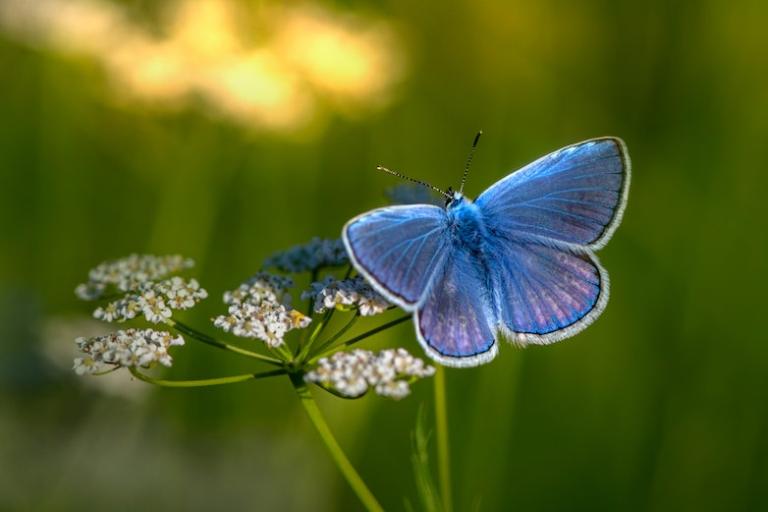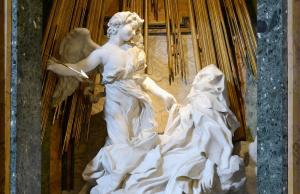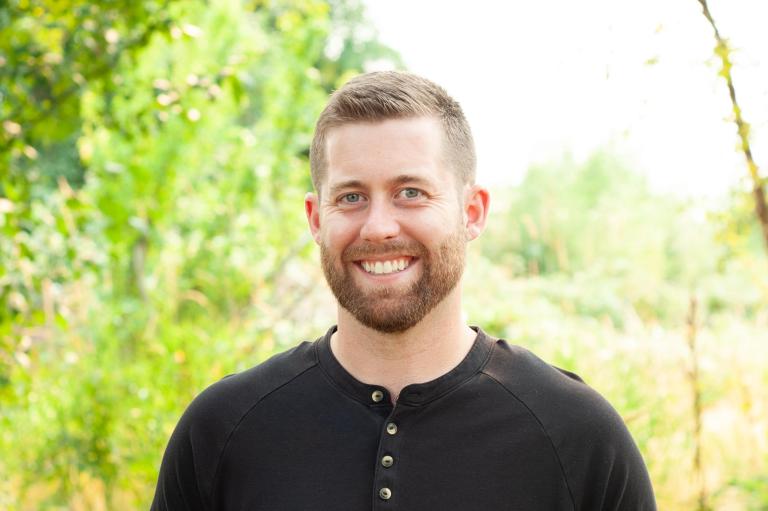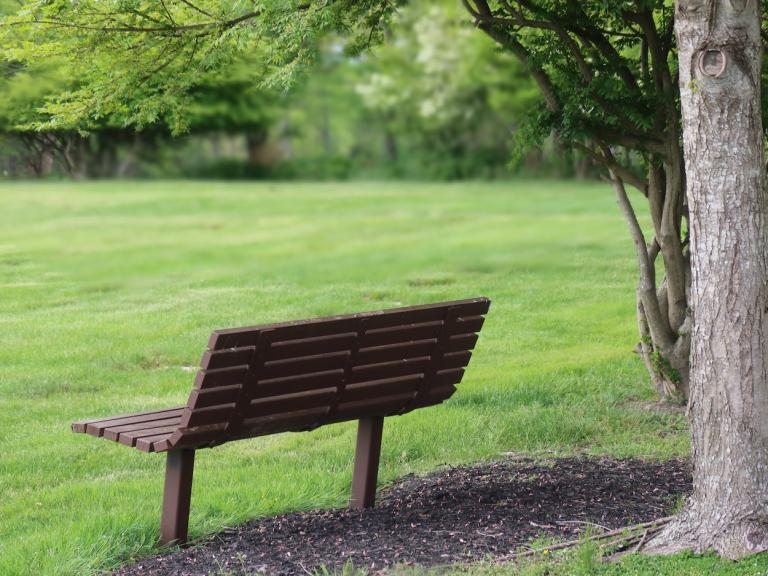
This is part three of my short series on Teresa of Ávila. You can read part one and part two or check out my post, 24 Wisdom Teachers Who Have Changed My Life.
The Fifth Dwelling of our Soul
Love made me what I am, that I may be what I was not before. – St. Augustine
We are brought into the fifth dwelling by a hand not our own; the threshold into it simply cannot be crossed thanks to our own self-work or individual merits. Much like the story of Jesus’ ascension where he was “raised,” we too must be led into this space; we cannot “raise” ourselves.
As with all things mystical, and most things spiritual in nature, the best way to attempt to understand this is through metaphor and poetry. Our rationalistic, post-enlightenment minds can’t compute the mystical; this is why so many of us can only believe what we can objectively prove. While this is extremely important in scientific thought, it breaks down within the experience of That Which is Bigger Than Us.
We need poetry, art, and metaphor to dig underneath the layers of our ego and intellectualism, bringing us into the embrace of our soul-language.
Side note: this is a space of growth for Progressive Christianity. I sense a deep soul-need in those who are searching for Something Greater to move beyond the constraints of looking for the rational, “historical Jesus” to seeking out the experiential and poetic “Jesus as Wisdom Teacher.” (For a great book on this, check out Cynthia Bourgeault’s The Wisdom Jesus.)
It is because of this that Teresa begins her explanation of the fifth dwelling by using a metaphor: that of the silkworm. The metaphor of the silkworm is how she describes our movement of coming into holy connection with the Divine, the transformation of “I” to “Thou,” and the melting of ourselves into That Which is Bigger Than Us.*
She writes that this silkworm, which has grown and nourished itself up until this point, now must enter into a new phase of life. The silkworm must experience a temporary moment of death so that it may be reborn as a butterfly, breaking from the cocoon and ascending into flight.
Likewise, we too must now enter a new phase, no longer through our own conscious effort, but by the invitation of That Which is Bigger Than Us. It is here that we experience a momentary, unforgettable yet fleeting, release of our ego’s hold and we are left begging, wishing, and craving more.
It is like being given the most delicious bite of food, only to have it disappear without any understanding of what it was, how to make it, and unsure if you’ll ever have it again.
Teresa refers to this moment as the Prayer of Union.
She says that the ego we have carefully created, this sense of self that we’ve built up for years and years (what we wear, who we talk to, the material things we cling to), is momentarily and temporarily released and let go; through flight, we take off into the Divine, untethered by our fears, desires, and the constructs of shoulds and coulds and woulds that we’ve listened to all our lives.
But it’s only for a moment. And then the world returns and we return to it, feeling as though we have had a taste of Heaven. Teresa writes that we now realize the yearning of our lives is to return to this experience more and more – that we must work to “put the silkworm to death consciously.” She writes,
“I confess that killing the silkworm requires inordinate effort, but it’s worth it; if you succeed, your reward will be manifold.”
Coming out of such an experience, we return to the work of letting go of our ego, of the reptiles that still slither around us, knowing that it is this work that brings us into a posture and readiness for the Divine to move in and through us.
Teresa writes that just as the butterfly flitters through the air, temporarily landing but never again finding true rest in material things, we are also on this new path. We have experienced a death of what once was and now live for a new purpose.
To use language from our sacred text, our soul has tasted the living water (John 4:10) and now yearns to swim in it. We travel into the world, filled with desire for the Divine and thus can live more fully animated by the Spirit, not simply compelled by our own ego-desires.
We have been made ready through this powerful experience to step into the world, bearing the cross that is ours’ to bear, melding together the love in our hearts with the actions most needed in an unjust world. By shedding our cocoon and working to transcend our addictions to ego, we have been saved and now experience the world in a whole new way.
My Reflection: The idea of union with God is unfortunately not typically preached about on Sunday mornings and therefore may come across as sounding New Age, esoteric, or downright heretical. Teresa, writing in the 1500s, was rooted within the Christian contemplative tradition and certainly understood how hard these concepts were to understand for those of us who have not experienced them.
The lack of knowledge of the contemplative tradition, including teaching of our union with God, is more of a disappointing byproduct of a post-enlightenment seminary training system than proof of heretical teachers. (And if you need assurance that this is not heretical, remember that St. Teresa was named a Doctor of the Church in the 1970s by Pope Paul VI, specifically for her spiritual teachings!)
Teresa is just one of the spiritual Elders who have made a major impact in my life. For more, check out my blog post, 24 Wisdom Teachers Who Have Changed My Life.
The Sixth Dwelling of our Soul
But as long as we live, there will be crosses to bear. – St. Teresa of Ávila
The storm comes.
It is at this point in our spiritual journey that there is a terrible and necessary experience of pain and sadness, unlike anything our reptiles have caused in us before. Having experienced the Prayer of Union in the previous room of our soul, that momentary release of our ego (the fictional self we have created in order to self-manufacture a sense of worth, value, and purpose), we now long for the whole world to return to that wonderful condition.
But as we walk through our daily lives, we see all around us a culture, civilization, humanity that does not see the way we do.
Imagine experiencing the most amazing thing in the world and then trying to share it with a crowd that has no capacity yet to understand. Imagine experiencing the most loving thing in the world and then trying to share it with a world deeply at war. Even worse, in this sixth dwelling, while we have had a powerful taste of something new, we still wrestle with our own reptiles, venturing back through our previous dwellings; the path of spiritual growth is never a linear one.
Teresa writes, “What are we doing? What are we waiting for? What could possibly constitute sufficient reason for us to stop looking for this Beloved even for a moment?” In the reality we now live in, we carry with us a feeling of such closeness to the Divine that it hurts to see or feel anything short of love.
And yet, there is this closeness – this intimacy. In the midst of the suffering and hurt we feel, it diminishes nothing of our experience of the Prayer of Union. We have a deep knowing that we can turn toward That Which is Bigger Than Us for comfort, trusting that we’ve seen through the veil in some mysterious way and hope one day to return.
Teresa says this pain we feel is not of dull dread but of fiery desire (Luke 3:16) for this experience of love to be embraced by all people; our holy desire burns us to our core.
She writes,
“It is as if a spark leaps from the hearth that is my God and presses into the soul, smoldering, but not quite hot enough to set her on fire. The mere touch of an ember leaves the soul with a delicious burning, an exquisite pain.”
In this sixth dwelling, we walk around experiencing this inner fire, strangely warming us and wounding us at the same time. Teresa, who is said to have herself repeatedly experienced raptures and visions, says that in this dwelling we constantly receive divine reminders of the love we’ve felt.

She describes one such rapture as feeling as if her soul was pierced by a flaming arrow, divinely sent to inflict a penetrating wound. She writes, “We don’t feel this wound with our earthly skin, in my opinion, but rather in the intimate depths of the soul.” The power and love of the Beloved penetrates into our core and bursts into flame just so that the soul may burn up and be reborn.
This wounding feels like yet another inner death experience, a transformational moment. Just as I wrote in the second post, the spiritual path modeled by Teresa of Ávila is not one of climbing up to the Divine, but rather one of descent. As Rumi says, “The wound is the place where the Light enters you.”
Just as in the initial letting go of our reptiles, and again in the momentary transformation of the Prayer of Union (the silkworm dying to become a butterfly), we again feel this wounding and wonderful process take form.
We now recognize that the shape of the spiritual journey is in fact resurrectionary: many little deaths and little resurrections, over and over again.
And so we enter deeper toward the seventh and final dwelling and the final experience of death and resurrection into the Divine, into union with God, the melting of ourselves into That Which is Bigger Than Us.
The Seventh Dwelling of our Soul
In my understanding, it is here in this dwelling that all the soul has been longing for is fulfilled.
Here the wounded deer is given abundant water to drink.
Here the soul delights beneath God’s holy tent.
Here the dove Noah sent out to see if the storm was over finds the olive branch as a sign that firm ground exists amid the storms and floods of this world.
– St. Teresa of Ávila
There is no door to this final dwelling because there is no need for one; there is no key because the journey of living a life intentionally, with its various ups and downs and fallings and risings, is itself the key.
In other words, the wisdom of the Elder, which we all have access to, is not attained through physical aging. It is unfolded in us through a lifetime of exploring and walking within one’s interior castle. This seventh and final dwelling is available to all who journey deeply.
We are brought into this final dwelling place by grace alone; there is nothing we can do to ensure our arrival here. No amount of good works or charity eases the process; there is no shortcut into the final dwelling. The best we can do, according to James Finley, is “place ourselves in a posture ready to receive.” Or in Richard Rohr’s language, “pray until you get to Yes!”
Once much of the active work of the first three dwellings is done, with the recognition and acceptance of our reptiles and with the intentional turning of our attention toward the Divine, we are free now to simply open ourselves up, inviting what is to come.
As we are brought into this new space, we are transformed by That Which is Bigger Than Us. It is a fully ridiculous (as in irrational and mystical) and inarticulable experience.
And so, Teresa uses metaphor and poetic language to attempt to give as close to an idea of this as she can. She tells us that this experience is one in which we are joined to God in a way never felt before.
“[It is] like rain falling from the sky into a river or pool. There is nothing but water. It’s impossible to divide the skywater from the landwater. When a little stream enters the sea, who could separate its waters back out again? Think of a bright light pouring into a room from two large windows: it enters from different places but becomes one light.”
This is a deep, powerful experience of union with the Divine.
Yet this seventh dwelling is not in fact the end of the journey because there is life still to live! The spiritual journey is not some personal evacuation plan from the earthly realm; we will not immediately ascend and wave goodbye to everyone and everything we know and love on earth!
In this experience and in this journey, our soul has found itself in a state of beauty and “great wowness” and wishes to remain in it for the rest of time. Rather than flittering all over, attempting to return to this transformative moment (like we did in the fifth dwelling), we can now simply rest as we experience the love of That Which is Bigger Than Us everywhere, all around us.
This union with the Divine leads us to walk with even more mindfulness than before, carefully and joyfully resting in the beauty of our world around us, doing the work we are uniquely called to do. Our “desire to serve God has grown more passionate” and we do not remove ourselves from earthly matters. In fact, we dive in head first, no longer to prove our own self-worth or our holiness, but rather to do what is ours’ to do: to create more of the love that we have now experienced.
The fruits of the spiritual journey will necessarily be activist in nature.
And our interior journey is certainly not yet over either.
“Just because the soul sits in perpetual peace does not mean that the faculties of sense and reason do, or the passions. There are always wars going on in the other dwellings of the soul. There is no lack of trials and exhaustion. But these battles rarely have the power anymore to unseat the soul from her place of peace.”
We are not all of a sudden perfect people, neutered of all human emotion. The traffic of the world may still cause us great anger and frustration and pain still brings tears. But we are also able to hold beauty in these moments alongside the realities of the world, embracing love amidst the chaos.
Here in the seventh dwelling, we are graced with living water to drink, a holy tent to find shelter beneath, and firm ground on which to do the work we are called to do. The journey inward, this beautiful life-long exploration of our interior castle, nurtures us and emboldens us that we may journey into the world living fully and loving abundantly.
To the extent that we can experience heaven here on earth, may the Beloved strengthen our souls and show us the way so that we can excavate this hidden treasure. The truth is, the treasure is inside of us.
This is what I would like for us to strive for, friends. We should engage in prayer – thirst for it, even – not because it feels good, but because it gives us the strength we need to be of service.
If you’re interested in exploring Teresa’s teachings and how they might guide you in your own story, I’ll be hosting an evening of journaling based on her teachings in March. Sign up here for more information!













